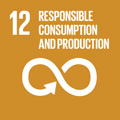- Docente: Marco D'Alesio
- Credits: 6
- SSD: ING-IND/35
- Language: English
- Teaching Mode: In-person learning (entirely or partially)
- Campus: Bologna
- Corso: Second cycle degree programme (LM) in Building Engineering -Architecture (cod. 5697)
Learning outcomes
At the end of the course the student will be able to: perform an economic evaluation of the building construction processes; plan the activities related to the maintenance and management of the building heritage; carry out management and control activities in the field of Global service.
Course contents
Prior knowledge requirements
Both fluent spoken and written English is needed as a prerequisite as all lectures and study material will be in English.
In order to properly understand the contents of this course is required a prior knoledge and understanding of basic site building management and building systems.
In addition, students should master software programs that uses spreadsheets to organize numbers and data with formulas, functions and graphics.
THE MODULE IS DIVEDE INTO 3 SEGMENTS
SEGMENT 1: GENERAL PRINCIPLE AND CASE STUDY [ABOUT 25 HOURS - 10 LESSONS]
1. BIM PROCESS OF BUILDING: the building process assisted by BIM-Building Information Modeling is a coordinated sequence of phases / steps involving the general planning phase of the work and the implementation of the planned interventions (PROGRAMMING AND DESIGN); CONSTRUCTION step; OPERATING and MAINTENANCE step and DEMOLITION / REGENERATION step.
STEP 1: PROGRAMMING
STEP2: DESIGN (CONCEPTUAL, DETAIL, ANALISYS) AND DOCUMENTATION
STEP 3: CONSTRUCTION
STEP 4: OPERATION AND MAINTENANCE
STEP5: DEMOLITION / REGENERATION
1.2 MANAGEMENT PROCESS: is a process of setting goals, planning and / or controlling the organizing and leading the execution of any type of activity:
- a project management process
- a process management process (process performance measurement and management system).
1.3 CONSTRUCTION PROCESS: it is the physical processes of building, landscaping or refurnishing plus all the associeted activities, regarding STEP 3 of BIM process of building.
The construction process is typically carries out by contractors, managing the fases of infrastructures construction, regarding: under stages organization; resources (human, materials and tecnology); execution processes; actors in the building process.
1.4 TOOLS: Work Breakdown Structure (WBS); Organizational Breakdown Structure (OBS); hierarchical breakdown of the project organization, in order to identify those responsible for each process; Responsibility Assigment Matrix (RAM), a two-dimensional matrix where the scheduling of activity times intersect, is returned to the Gantt chart and reticular techniques, the Program Evaluation and Review Technique (PERT) and the Critical Path Method (CPM), which define the temporal succession and the dependencies between the activities, with the identification of the critical activities, the activities and the tasks to be performed included in the WBS with the organizational units of the OBS; Cost Breakdown Structure (CBS), to support economic planning;
1.5 DECISION-MAKING MODEL: definition of the decision-making process: making a decision is connected with the possibility of having alternatives, at least two; otherwise, faced with a single solution, there are no decisions to make. Therefore the decision-making process is connected with the presence of alternative actions. There are static models and dynamic models.
Static models help us to understand the behavior of a system in conditions of rest / equilibrium: for example, the calculation of a structure, or the determination of the equilibrium point between supply and demand in a market.
Dynamic models help us understand how a system evolves over time: for example, the growth of a population, or the spread of an epidemic.
There are several types of models: scale models; analytical models; simulation models
1.6 CASES STUDY
SEGMENT 2: LCC - LIFE CYCLE COST IN THE USEFULL LIFE [ABOUT 12 HOURS - 4 LESSONS]
1.1 DEFINITIONS AND CONTENTS
1.2 LCC METHOD AND THE COSTS STRUCTURE
1.3 COST BREKDOWN STRUCTURE
1.4 PRESENT VALUE AND THE FINANCIAL MATHEMATICS
1.5 RELIABILITY INDEX
1.6 CASES STUDY
SEGMENT 3: PROJECT WORKSHOP
[ABOUT 18 HOURS - 6 LESSONS]
For both modudes, Construction and Facility Management and Managing Engineering and Construction Processes, will be developped a unique project-work that will merge the knowledge of both learnig contents.
According to the number of partecipants the students will possibly be divided into groups in order to developpe the final project-work.
INSIDE THE COURSE IT WILL BE THE WORKSHOP ON THE SPECIFIC ITEMSReadings/Bibliography
TEXTS AND BIBLIOGRAPHY WILL BE PROVIDED AT THE END OF EACH SEGMENT
Teaching methods
THE COURSE IS ARTICULATED IN TWO PARTS: THEORETICAL LESSONS AND WORKSHOP
THE PROJECT WORK WILL BE DEVELOPED DURING THE FINAL SESSION AND YOU WILL BE ASKED TO WORK IN GROUP
Assessment methods
THE EVALUATION WILL BE DIVIDED INTO TWO PARTS: PRESENTATION OF THE PROJECT WORK AND ORAL EXAM
Teaching tools
THE LESSONS WILL BE HELD USING THE SLIDES
Office hours
See the website of Marco D'Alesio
SDGs



This teaching activity contributes to the achievement of the Sustainable Development Goals of the UN 2030 Agenda.
